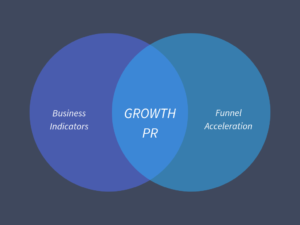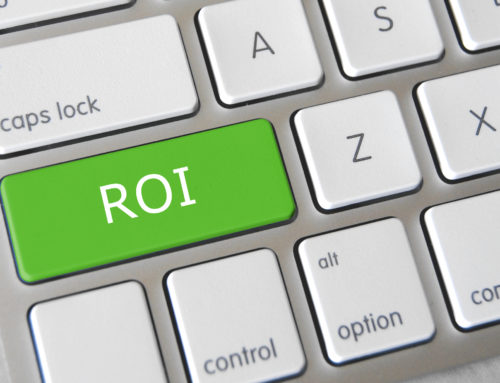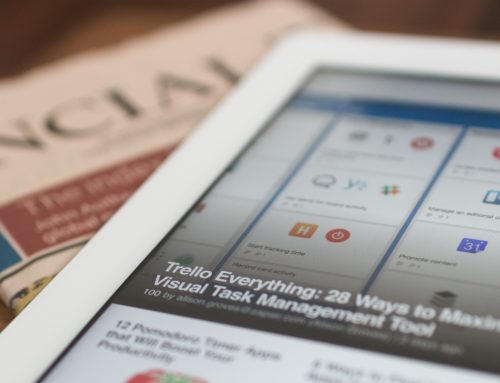 Guest Post by Dan Beltramo
Guest Post by Dan Beltramo
Although PR and communications have always been about telling a brand’s story and managing its reputation, the way that we create and amplify that story, in addition to how (and when) we measure our success, has shifted from creative campaigns built over weeks on best guesses and gut instinct to data-driven, real-time, iterative storytelling with metrics that tie back to provide revenue indicators and accelerate customer funnel activities that impact the bottom line.
Enter the era of Growth PR.
Marketing and Communications are converging as PR is poised to evolve radically over the next decade. Data science and digital media are transforming the way companies tell stories and how they can measure success. Thanks to the latest technologies, PR now has the potential to be a data-driven powerhouse that maps to real business results, earning a seat at the table alongside Marketing generally, or, at least, other important marketing activities. Instead of publishing repetitive press releases and campaigns built on educated hunches, the Growth PR era is fueled by data-driven, iterative storytelling. Communication tactics can be tied to revenue or sales funnel activities that impact the bottom line.
Although it is probably evident to you that PR is changing, you many not be aware of the catalysts that have caused this evolution. It’s important to understand the two major outside forces fueling this profound shift:
1. Too Much Noise Across Too Many Digital Channels
More data has been created in the past two years than in the entire previous history of the human race. Our computers, smart phones, televisions and other devices are inundated with information: From news articles and blog posts, to tweets, Facebook posts and messages on dozens of other social networks, to emails and newsletters.
As communicators, we are presented with a huge challenge: How do we reach a target audience when they are consuming messages in myriad ways and we are competing for attention with more sources than ever?
2. Sales and Marketing are measured by their business impact, and PR will be, too
PR coverage has typically been measured by media outlet audience size. For example, if a PR pro garnered coverage for their brand in Forbes, they may report the circulation of Forbes as the potential audience size that saw the message. This method of measurement does not tie back to business objectives and typically does not resonate with the C-Suite. The CRM, MarTech and AdTech revolutions have forever changed the way sales organizations and marketers work and measure their success. The methods they use to attribute business achievements and even revenue back to marketing efforts have given birth to bigger budgets and new skills.
Public relations professionals are now discovering that they need to figure out how to attribute their campaign success to business objectives to stay relevant in today’s world of marketing attribution.
With this explosion of content and demand for measurement, Earned and Owned Media are now digital channels measured amongst the larger marketing mix across brand and sales-driven KPIs. It is no longer acceptable to proffer low grade activity measures. PR professionals need to be thinking about things like web traffic, customer engagement and conversions. PR now involves business indicators and funnel acceleration to drive GROWTH.
With limited time and budget, this could be a big challenge. Fortunately, we now have two major tools at our fingertips: data and insights. Data science, AI and real-time feedback now allow us to measure our efforts in new ways.
Growth PR = Business Indicators + Funnel Acceleration
Growth PR starts with Brand Indicators (like tone/sentiment and share of voice) and Revenue Indicators (like website traffic, social shares and readership) and ties those early indicators back to Funnel Accelerators (like conversions, calls-to-action and qualified leads). It is paramount to the future success of the practice of PR that we connect the dots between our key brand messages, the PR and marketing activities that drive those messages and the impact it has on business and revenue indicators.
By understanding the purpose and objectives for creating and amplifying a brand’s message and story, PR professionals can now adjust stories and messages more nearly to real-time, using data and technology to understand a message’s resonance, the most effective channels for amplification and how the strategy impacts the bottom line.
Without PR attribution and measurement, communicators typically remain pigeonholed at the top of the funnel, i.e., which publications wrote about their brand. But with PR attribution, one can see how efforts impact goals and metrics aligned with the lower part of the funnel such as whether or not those articles prompt downloads, convert leads into customers, and so forth. For communicators to continue to have a seat at the table, understand the effectiveness of their efforts, and make data-driven decisions in PR planning, utilizing technology to sift through and analyze mountains of non-normalized data sets has become paramount.
Increasingly, CMOs and CEOs are looking for integrated marketing communications measurement. They want to see how efforts across Paid, Earned, Shared, and Owned Media are impacting the bottom line and driving business results. PR is responsible for digital storytelling, Earned Media and, increasingly, Owned Media. These efforts are now part of an integrated measurement program that has clearly defined KPIs (Key Performance Indicators.)
Here is a list of some metrics and KPIs used to measure success for Earned and Owned Media:
- Revenue attributed to Earned and Owned Media
- Leads from Earned and Owned Media converted to customers
- Identifiable visitors with interactions from Earned and Owned Media
- Percentage of calls-to-action attributed to Earned and Owned Media
- Percentage of qualified leads attributed to Earned and Owned Media
- Website Traffic from Earned Media (both with backlinks and no backlinks)
- Social Amplification of Earned and Owned Media
- Owned Media Readership
- Power of Voice (an “intelligent,” quality adjusted Share of Voice metric that compares relevance)
As Communications and PR leaders, we now need to drive strategy through data and tie our efforts back to our organization’s business objectives. Without this ability to infuse our processes with data and connect our communications and PR efforts directly to measurable results, we are limiting our ability to reach our full potential and making it harder and harder to maintain our relevance within the modern revenue organization. Fortunately, we are now at the apex of having access to tools that will help us succeed and forever alter communications measurement. Our fate is in our own hands.
 Dan Beltramo is the CEO of AirPR, a data science company for communications and PR. Dan co-founded Vizu, a digital media measurement firm that pioneered real-time brand lift measurement. Vizu was acquired by Nielsen in 2012, where Dan went on to become EVP of Product Leadership for all Marketing Effectiveness products globally. After leaving Nielsen in 2016, Dan joined the boards of IRIS.TV, an AI-powered video content recommendation engine, and Discuss.IO, a digital video-enabled qualitative consumer research platform.
Dan Beltramo is the CEO of AirPR, a data science company for communications and PR. Dan co-founded Vizu, a digital media measurement firm that pioneered real-time brand lift measurement. Vizu was acquired by Nielsen in 2012, where Dan went on to become EVP of Product Leadership for all Marketing Effectiveness products globally. After leaving Nielsen in 2016, Dan joined the boards of IRIS.TV, an AI-powered video content recommendation engine, and Discuss.IO, a digital video-enabled qualitative consumer research platform.
![[EVENT]: PR Hacks for Small Biz (online)](https://shonaliburke.com/wp-content/uploads/2021/06/FB-Ad-1200x800-01-01-01-Copy-500x383.jpeg)








Leave A Comment